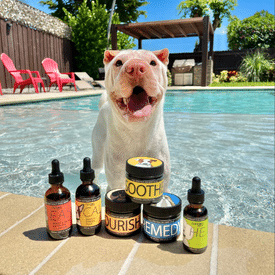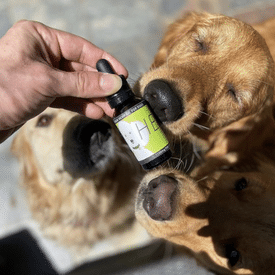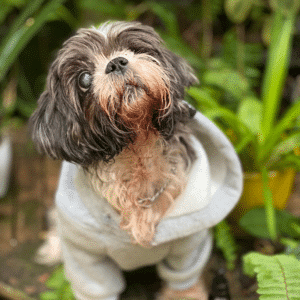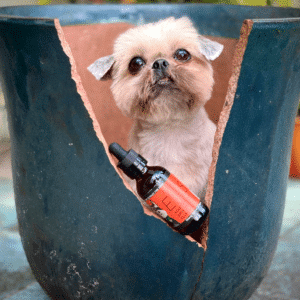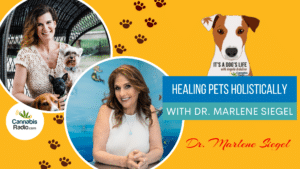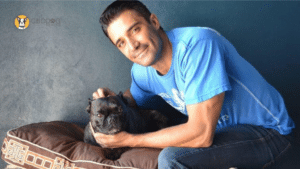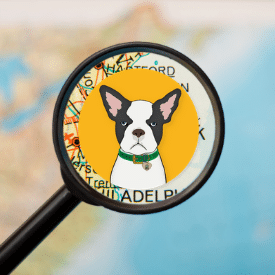Where the Lost Dogs Go with Susannah Charleson

Listen to “Where The Lost Dogs Go With Susannah Charleson” on Spreaker.
When pets go missing, it is incredibly stressful. I can’t imagine looking out and seeing that my dog is missing – it was bad enough when I saw my dog Nina try to run after a car. Fortunately, there are people like Susannah Charleson and her dogs, Puzzle and Ace, who work to find lost people and lost pets.
“One in six pets gets lost,” says Charleson. “Without human help, only one in 10 ever comes home.”
Puzzle and Ace
In the wake of the Oklahoma City bombing, Charleson clipped a photo from the newspaper of an exhausted canine handler, face buried in the fur of his search-and-rescue dog. A dog lover and pilot with search experience herself, Susannah was so moved by the image that she decided to volunteer with a local canine team and soon discovered firsthand the long hours, nonexistent pay, and often heart-wrenching results they face. Once she qualified to train a dog of her own, she adopted Puzzle, a strong, bright Golden Retriever puppy who exhibited unique aptitudes as a working dog but who was less interested in the role of compliant house pet.
When she took Puzzle for walks, she noticed that other animals – often missing pets – would come out of hiding to approach him. Suddenly, people began asking her for help finding their missing pets because Puzzle had such a calm demeanor. Puzzle is what is called a magnet dog: a dog who attracts other animals. Around the same time, Charleson adopted a battered maltipoo, Ace, who had been living on the streets, foraging for food and barely surviving.
“He was in terrible shape,” says Charleson. “He was dying of pneumonia. We knew he had survived a dog attack because we could see the scars and open wounds. But he bonded with my search dog and seemed interested in nose work. So, I started training him using short motivational searches. Now, he is the lost dog who has been trained to find lost pets. I am convinced that the resourcefulness that Ace had to bring forward to survive is what made him such a good search dog.”
What should pet parents do if their pet is lost?
Before your pet ever goes missing, it is important to be prepared. Some of the top tips to prepare for losing a pet include:
- Prevention is key.
“I have what I call the rule of two,” says Charleson. “There are always two forms of barricades between my dog and the ability to run away. I have a latch and lock on my gate. They are behind two doors. If I have contractors in my house, I double that, so they are in a bathroom in a bedroom with the doors closed. I believe in layering that protection. Because the truth is, guests don’t know the routine. Contractors are busy focusing on their job and are not focused on closing doors even if you tell them that there are animals in the house.”
- Be prepared to make signs. First, it is great to have on hand sign-making materials. It doesn’t take much. You can use old campaign signs, neon poster boards, and a super fat permanent marker, plus a roll of clear packing tape.
“One thing we know is that getting signs out quickly is the most effective way to get an animal home because you are in your neighborhood,” says Charleson. “Unlike social media, we know anyone can see it.”
- Take to social media. Social media plays a huge role, so get connected to the lost pet pages in your area before your pet ever goes missing.
“Sometimes, you have to join the groups which has to be approved, but if you are looking for your pet you don’t have time to wait for approval,” says Charleson. “So getting involved in those pages and groups before your pet ever goes missing can save valuable time. You don’t have 12 hours to wait for approval when your pet is lost. And I really recommend using every form of social media that you can think of including the buying and selling sites if you can get the posts approved.”
- Canvass the neighborhood. If your animal does get loose, canvass the area on foot and by car. Talk to everyone. Put up the most recent picture or two and include the pet’s name and your phone number.
“I have a plastic page protector with the information, a big picture, the date lost, and your phone number,” says Charleson. “You want people in a fast-moving car to see what’s going on. I always put it on upside-down so that If it rains water doesn’t get inside and ruin it. You’ll get a fair amount of visibility and recognition.”
You can also prevent your pet from running away by keeping them calm in stressful situations. Full spectrum hemp extract (CBD) is a great, all-natural way to keep them calm in stressful situations so that they are less likely to run away.
“The quicker the search gets started with a combination of neighborhood canvassing, signage, and social media the better,” says Charleson. “With those methods, in about 80-85 percent of the cases I have seen the animal is found.”
Angela Ardolino is a holistic pet expert who has been caring for animals for over 20 years, and operates a rescue farm in Lutz, Florida. She is also the owner of Beautify the Beast, a natural pet salon and shop. After getting her certificate in Medical Cannabis Biology and Therapeutic use from the University of Vermont School of Medicine, she founded CBD Dog Health to provide high quality, all-natural medical cannabis products designed specifically for pets. Angela has five dogs, plus 4-10 at any time that she is fostering or boarding; visit www.angelaardolino.com for more information.
About Susannah Charleson
In the wake of the Oklahoma City bombing, Susannah Charleson clipped a photo from the newspaper of an exhausted canine handler, face buried in the fur of his search-and-rescue dog. A dog lover and pilot with search experience herself, Susannah was so moved by the image that she decided to volunteer with a local canine team and soon discovered firsthand the long hours, nonexistent pay, and often heart-wrenching results they face. Once she qualified to train a dog of her own, she adopted Puzzle, a strong, bright Golden Retriever puppy who exhibited unique aptitudes as a working dog but who was less interested in the role of compliant house pet.

